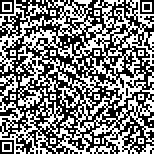| 引用本文: | 刘国锋,钟继承,张雷,范成新,任小龙.有机改性粘土对铜绿微囊藻的絮凝去除.湖泊科学,2009,21(3):363-368. DOI:10.18307/2009.0308 |
| LIU Guofeng,ZHONG Jicheng,ZHANG Lei,FAN Chengxin,REN Xiaolong.Microcystin aeruginosa flocculation removal by organo-modified sediment. J. Lake Sci.2009,21(3):363-368. DOI:10.18307/2009.0308 |
|
| 本文已被:浏览 6655次 下载 5258次 |

码上扫一扫! |
|
|
| 有机改性粘土对铜绿微囊藻的絮凝去除 |
|
刘国锋1,2, 钟继承1, 张雷1,2, 范成新1, 任小龙3
|
|
1.中国科学院南京地理与湖泊研究所湖泊与环境国家重点实验室, 南京 210008;2.中国科学院研究生院, 北京 100049;3.江苏省水文水资源勘测局无锡分局, 无锡 214031
|
|
| 摘要: |
| 如何有效的去除富营养化水体中频繁出现的藻华,已成为湖泊环境治理中的一个迫切问题.通过用表面活性剂十六烷基三甲基溴化铵改性的原位沉积物为介质,利用搅拌器和沉积物再悬浮发生装置来研究烷基铵盐改性物质絮凝去除铜绿微囊藻细胞的作用和效果.结果表明,烷基铵盐和粘土的添加量分别为0.3g/L和0.2g/L,搅拌停止30min后,其去除效率达83.9%;在絮凝沉降500min后,水体中藻细胞去除率可达98.9%,较能有效的絮凝沉降藻细胞;同时水体的浊度也有相应的提高.电镜扫描表明这种活性剂形成的网捕包膜作用对藻细胞的沉降起到了重要作用.但烷基铵盐的杀菌作用可能会造成藻细胞内含物向水体释放的风险. |
| 关键词: 十六烷基三甲基溴化铵 铜绿微囊藻 絮凝沉降 电镜扫描 网捕 |
| DOI:10.18307/2009.0308 |
| 分类号: |
| 基金项目:国家重点基础研究发展计划课题(2008CB418105);江苏省太湖水污染治理科技专项(BS2007161);国家“十一五”科技支撑计划项目(2006BAC10B03) |
|
| Microcystin aeruginosa flocculation removal by organo-modified sediment |
|
LIU Guofeng1,2, ZHONG Jicheng1, ZHANG Lei1,2, FAN Chengxin1, REN Xiaolong3
|
|
1.State Key Laboratory of Lake Science and Environment, Nanjing Institute of Geography and Limnology, Chinese Academy of Sciences, Nanjing 210008, P. R. China;2.Graduate School of the Chinese Academy of Sciences, Beijing 100049, P. R. China;3.Wuxi Reconnaissance Bureau of Hydrology and Water Resource, Wuxi 214001, P. R. China
|
| Abstract: |
| It is becoming an urgent problem in the lake environmental treatment that how to effectively remove the highly frequently cyanobacterial bloom. The purpose of the paper is to research the surfactant—Hexadecyl trimethyl ammonium bromide (CTAB)-mediated in-situ-sediment to remove the cyanobacterial through agitation effect and stimulating the water column disturbing through sediment resuspention generator in the laboratory. The results showed that the blue-green algal's removal efficiency could reach 83.9% after 30min water body still at the dosage adding of CTAB and sediment were (0.30+0.20)g/L; and the removal efficiency reached 98.9% after water body still. Preliminary results showed that the CTAB (0.30g/L dosage) could effectively remove the cyanobacterial in the lab, and also the turbidity of the water body had the corresponding change. The SEM images of the CTAB-flocculated algae showed that the netting and antivirus could be an important role in the alge cell flocculation. However, the antivirus role of CTAB could cause the risk that the cell-inclusion would release to the lake water. |
| Key words: Hexadecyl trimethyl ammonium bromide Microcystin aeruginosa coagulation and flocculation SEM netting |